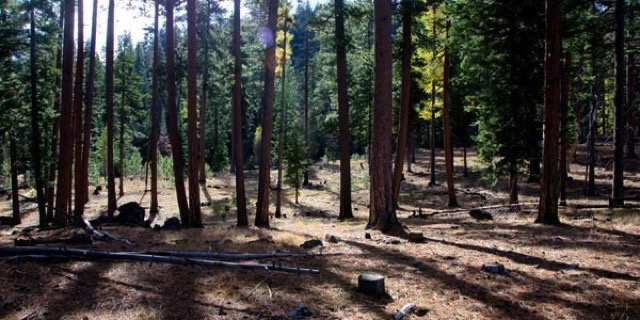An environmental group has sued the U.S. Forest Service, arguing that a plan to thin trees surrounding popular Walton Lake in Ochoco National Forest needed a fuller environmental review and public comment process.
The nonprofit League of Wilderness Defenders’ lawsuit filed Monday in U.S. District Court in Oregon argued that the Forest Service had illegally avoided an environmental review of the proposed work. The effects of the thinning would be extremely noticeable and would turn the forest surrounding the lake into an open, parklike dry pine forest, the group said, citing a Forest Service analysis of the project. The lawsuit also argues that the project would commercially log old growth fir trees and hundreds of large trees “in a national forest that already has too little old forest and too few large trees.”
The Forest Service in December 2015 approved the Walton Lake Restoration Project, including thinning, replanting and other work on about 176 acres in the recreation area at Walton Lake on the Lookout Mountain Ranger District of Ochoco National Forest.
According to the approval decision, some of the mixed conifer stands of trees around the lake are infested with laminated root disease, a condition that spreads through tree roots and decays the roots and base of infected trees. The trees can then fall, although they may appear healthy. The process creates habitat for wildlife and improves the soil, but can pose safety risks in areas that people use for recreation, the decision said.
The disease can hit Douglas fir trees and grand fir trees. The decision noted that the ponderosa pine stands and some of the mixed conifer around the lake are not infested, but that the fir growing underneath those larger trees compete for resources and that the added stress could lead to bark beetle problems for the pines. The project also entails planting and reforestation, including of ponderosa pine.
The decision stated the project did not require an environmental impact review because it would not have a significant effect — an exemption the agency noted it can use for such treatment projects that aim to control disease and that total less than 250 acres, among other conditions.
But Karen Coulter, director of the league’s Blue Mountains Biodiversity Project, said the Forest Service had not told the public that the logging work would transform the area — the most popular recreation site in the Ochoco forest. The expedited process approving the project avoided review of environmental impacts and avoided further public comment on it, Coulter said. She also argued that laminated root disease is a native fungus that helps create habitat for animals.
“There’s nothing abnormal about there being some root rot in there,” Coulter said, adding that logging spreads the fungus anyway.
She argued that it takes time for such large trees to grow.
“This isn’t something that quickly grows back,” Coulter said of older trees.
Patrick Lair, an Ochoco National Forest spokesman, said the agency could not comment on pending litigation. But Lair said the project targets the laminated root infestation in fir trees around the lake because the resulting rot can lead to trees falling in a place with roads and a lot of visitors. He noted that the project aims to preserve the ponderosa pine there.
The site will look different following the work, Lair said. But he emphasized that replanting work will also occur, with species like ponderosa that can resist the root disease.
Source: www.bendbulletin.com




